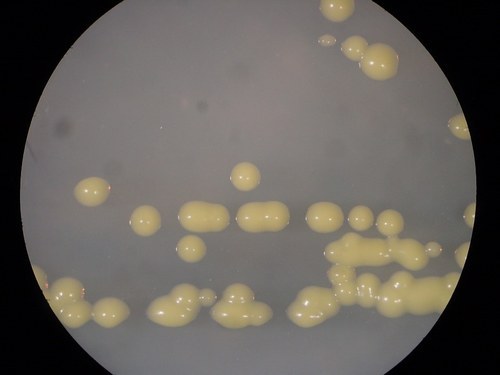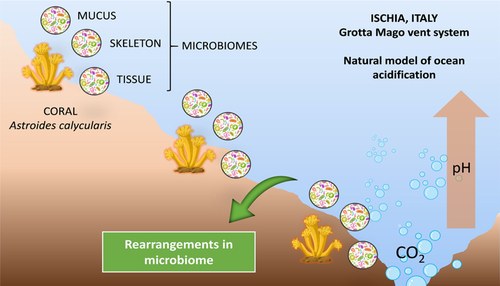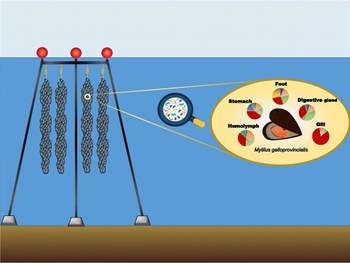Marco Candela - Giorgia Palladino - Laura Pezzolesi - Rossella Pistocchi - Simone Rampelli - Daniel Scicchitano - Mara Simonazzi - Giulio Zanaroli

Oceans cover over two thirds of the earth's surface, and represent the largest ecosystem on the planet. Single-cell microrganisms (including bacteria, archaea and eukaryotic microbes) represent the most significant fraction of biomass and biodiversity, and play an essential role in the functioning of the ecosystem, in food webs and in biogeochemical cycles. This invisible majority (Whitman et al., 1998) is a source of enormous biological diversity, which is reflected in a variety of bioactive compounds and secondary metabolites with potential applications in biotechnology. In fact, marine microorganisms have evolved in the ocean by developing mechanisms to survive in the surrounding environment, such as growth strategies and genetic adaptations that allow them to live in hostile environments, for example in the ocean depths characterized by very high pressures, temperatures close to zero and absence of light.
The ability of marine microbes to adapt to the surrounding environment as well as to its changes, combined with the high degree of genetic plasticity, have influenced their ability to produce metabolites and secondary compounds. The microbial world therefore represents an important opportunity for bioprospecting, also due to the advantages associated with microbial biotechnologies. For example, unlike macro-organisms that have to be massively collected from the sea to obtain sufficient quantities of the target metabolite, microorganisms can be grown in large quantities in laboratory, thus microbial biotechnologies result more sustainable than those based on the extraction of bioactive molecules from marine macro-organisms.
Photo Credits: Luna Gian Marco IRBIM CNR
Marine organisms live in association with complex microbial communities, which include viruses, bacteria and fungi, known as microbiomes. The microbiomes of marine holobionts (which are defined as the host organism plus the associated microbial community) have co-evolved as strong adaptive partners, capable of providing the host with additional means of phenotypic plasticity. The intrinsic properties of the microbiome can be exploited to prevent pollution and effects of climate change. Many anthropogenic factors, such as pollution, water overheating and their acidification, can induce rapid and adaptive (or maladaptive) changes in the microbial communities of holobionts. These variations can therefore be exploited both as a proxy for climate change and as functional resources for its mitigation and bioremediation.
Unlike their host, the adaptive response of microbiomes is incredibly fast. Potentially, it could take place on a day-year time scale. These changes in the adaptive response of microbiomes are the combination of different mechanisms, such as the change in the relative abundances of the microbial community members, the horizontal acquisition of new microorganisms and the horizontal gene transfer. Our goal is to exploit these intrinsic properties of microbiomes not only as proxies for environmental stress and pollution, but also as a functional resource to mitigate their effects on ecosystems and for the bioremediation of contaminated marine sites. In fact, the holobiont microbiome, endowed with a complex and highly adaptive repertoire of functions, and only partially explored, has enormous exploitation potential for bioprospecting and for the implementation of innovative bioremediation approaches, which can benefit from the intrinsic role of holobionts as ecosystems engineers and, in parallel, their potential for disseminating microorganisms into the surrounding water.
Thanks to the application of the shotgun technique applied to metagenomics, we study the variations of microbiomes in marine holobionts that live in different environmental conditions, each for a specific application. In particular, the adaptive response of microbiomes to overheating and acidification of water is used to explore if and how the holobionts microbiome can be exploited to mitigate the impact of climate change on marine ecosystems.


Similarly, the microbiome response of holobionts to water pollution is explored as a potential resource to support the resilience of ecosystems for effective and holobiont-dependent bioremediation processes. In particular, in the latter case, two approaches can be developed. The first involves the transplantation of holobionts adapted to the polluted ecosystem in the contaminated site, while the second is based on a targeted in situ modulation of the holobionts microbiome in favour of a configuration capable of degrading pollutants.